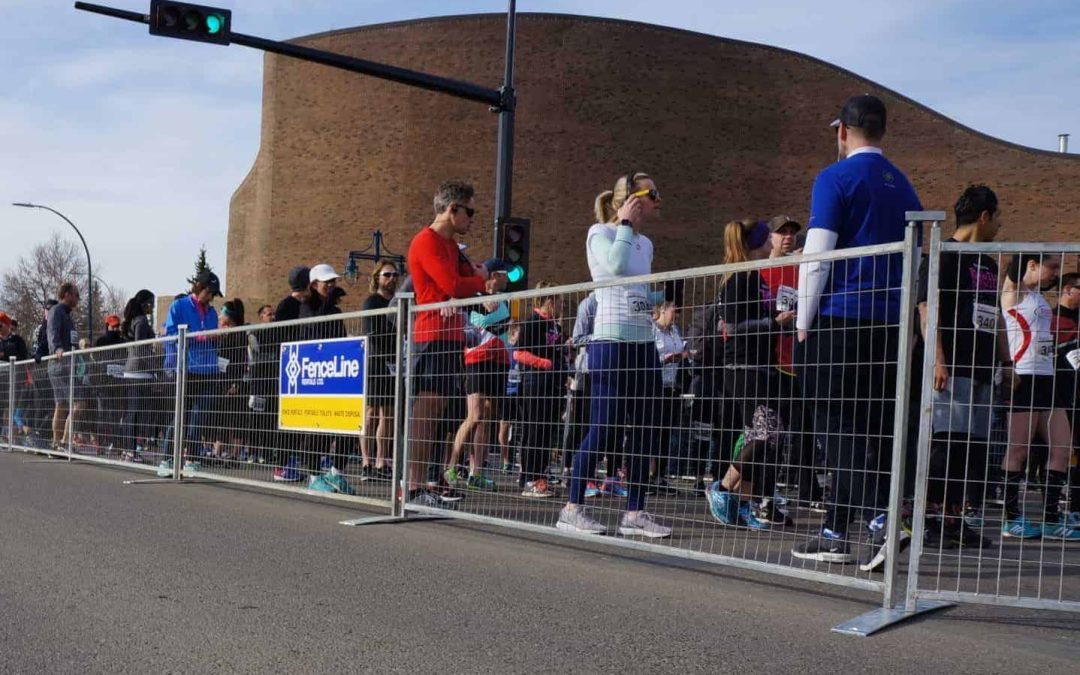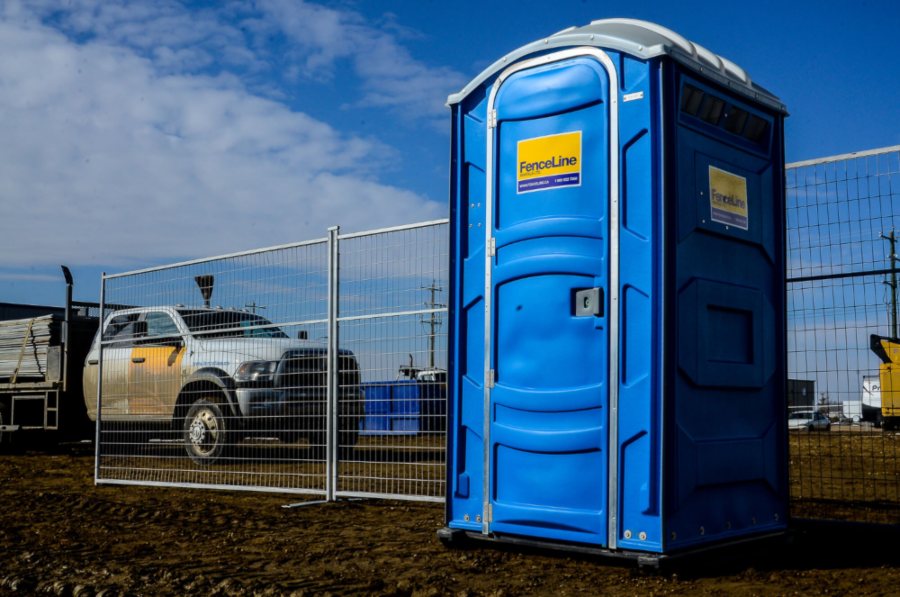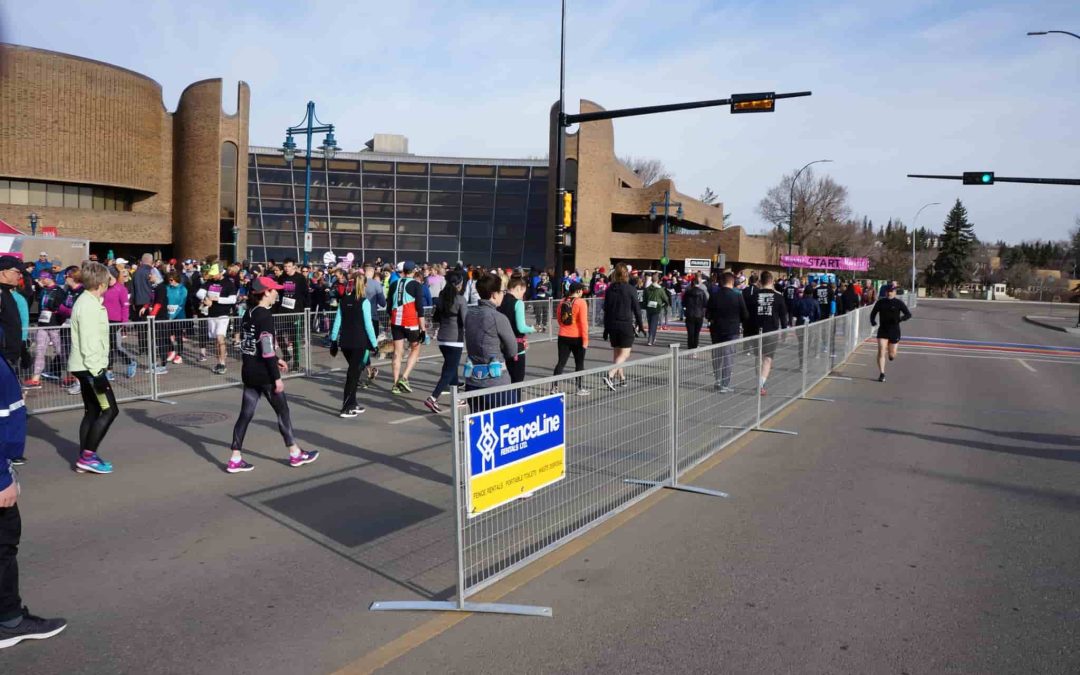
When Should I Rent Temporary Fencing in Alberta?
Many fencing companies that offer long-term fencing solutions also supply customers with temporary fencing for short-term events or projects. In these situations, temporary fencing is much more efficient and cost-effective than adding a permanent fence.
The decision of whether temporary fencing is the right fit for your situation depends on needs such as:
- The type and scale of the event or project
- Safety/security concerns
- Venue location and layout
- Licensing and legal requirements
- Crowd control
- Privacy
- Alcohol consumption
- Budget
What Is Temporary Fencing?
Temporary fencing is fencing that is installed temporarily and not permanently. It consists of chain link fence sections supported by feet or braces without supports in the ground.
Depending on needs, temporary fencing may be set up around any area. Its sections can be movable for greater flexibility. If desired, temporary fencing can also be customized with gates or handrails.
The short-term solution can help keep people, children, and pets away from danger, protect you or your business from legal liability, control crowds, and more.
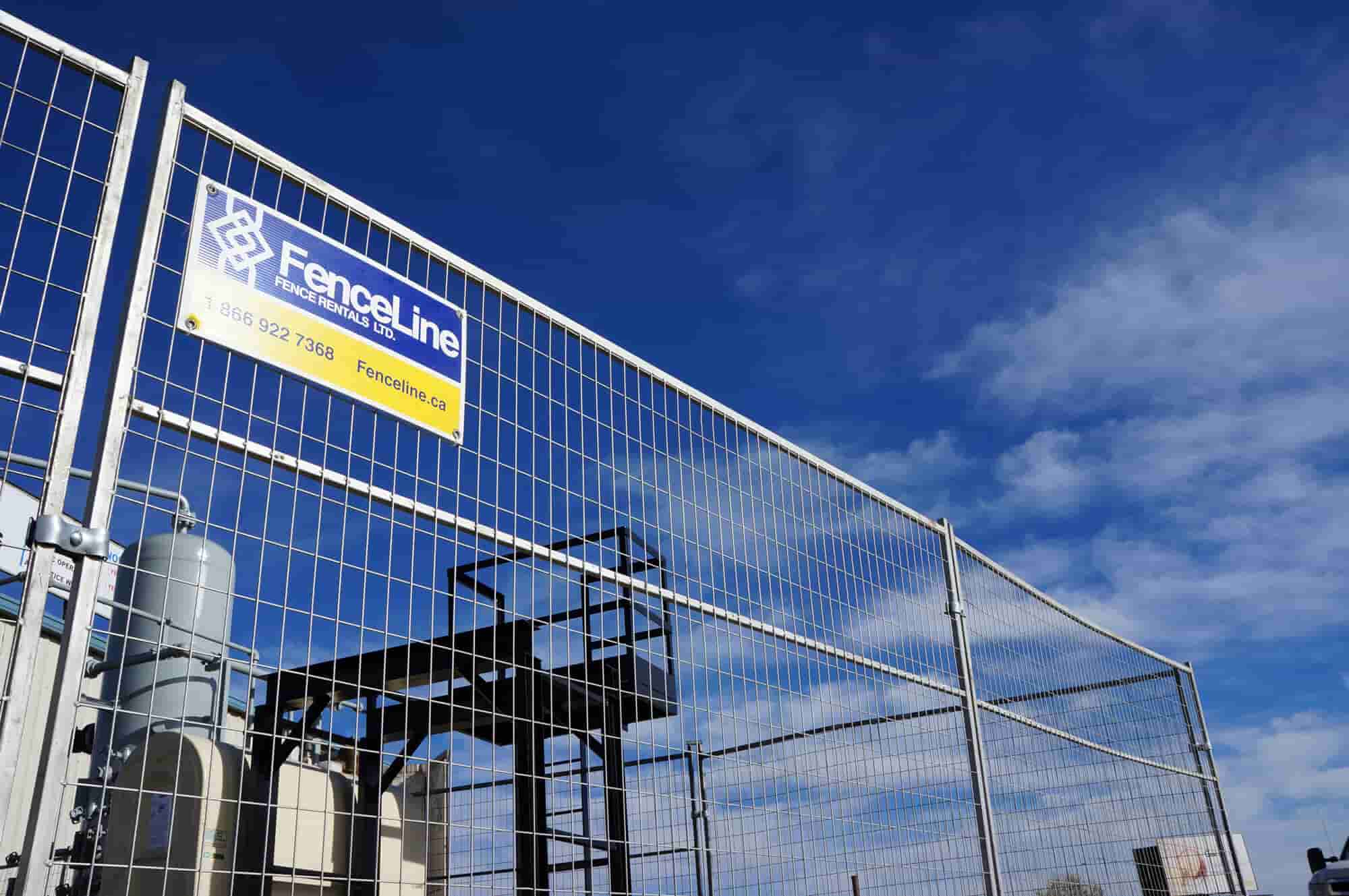
What Is Temporary Fencing Used For?
Many situations call for temporary fencing, which is often more efficient and cost-effective than other barrier measures. Here are a few:
- Carnivals, concerts, fairs, or other outdoor events
- Entertainment on private property
- Commercial sites
- Construction sites
- Parades or road races
- Demonstrations
- Traffic control
- Landscaping
- Dog runs
Temporary Fencing: What to Consider Before Renting
Depending on your type of event, project, or worksite, fencing is likely necessary. However, this isn’t always the case. Considering the following factors can help you decide whether to pursue a temporary fence rental in Calgary or Edmonton.
- Type and Scale of the Event: Larger or public events often call for temporary fencing for crowd control. Smaller, private events may not. The nature of the event (e.g., concert, festival, sporting event) also influences the need for fencing to designate areas, manage access, and ensure participant safety.
- Venue Location & Layout: Events held in open or public spaces usually require fencing to define the event boundaries, control access points, and prevent unauthorized entry. Your venue’s layout will determine the extent and configuration of the fencing needed.
- Safety & Security: Temporary fencing can protect attendees, staff, and equipment from external threats and help manage crowds to prevent accidents.
- Licensing & Legal Requirements: Local authorities may require fencing for events of certain sizes or types to ensure public safety. Check with local regulations to determine if your event must meet specific criteria.
- Crowd Control: Holding a huge event? A temporary fence can help guide movement and ensure safety.
- Privacy: If your event is private or certain areas are restricted to VIPs or staff, fencing can protect privacy and restrict access.
- Alcohol Consumption: Some events require fencing to ensure compliance with licensing laws. A temporary fence can contain the designated drinking area and help prevent underage drinking.
- Budget: While a fence may be necessary for your event, finding a company that fits within your budget is key.
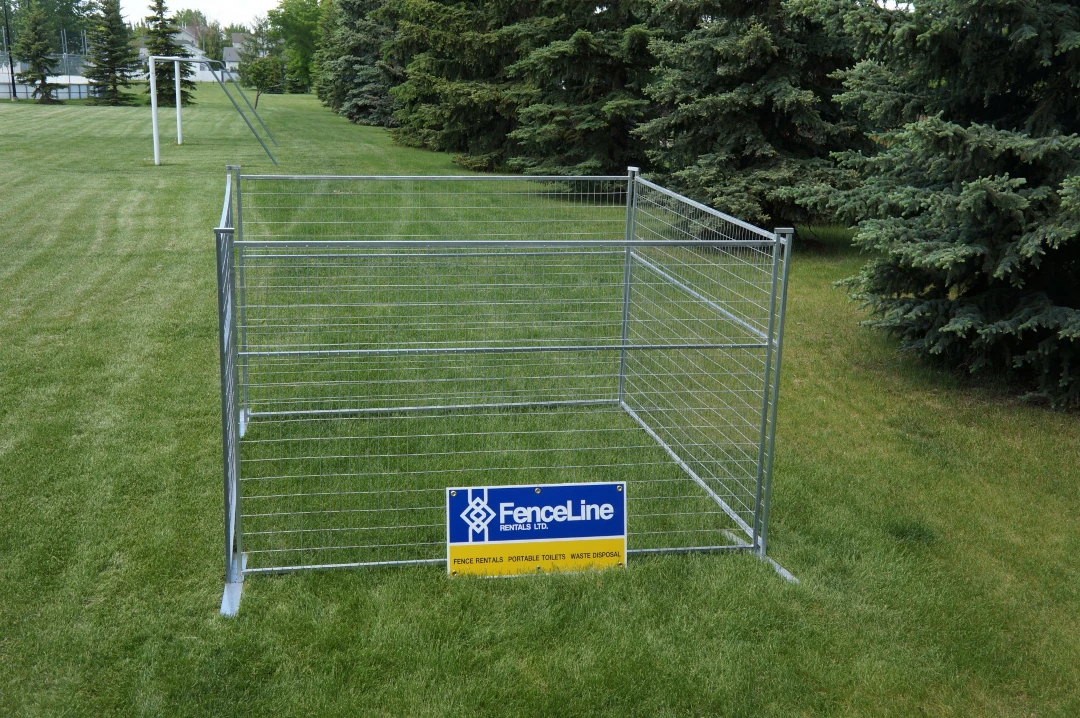
Get Temporary Fencing Fast—Call FenceLine Today
FenceLine Rentals Ltd. has been the trusted, local choice for temporary fence rentals in Edmonton, AB since 1998. We offer it all from fence rentals and portable toilet rentals to our waste management and dog runs. You can always count on us for valuable solutions for your event, business, or home.
Learn more about our rental services online or call us at 780-720-6300 today.
FAQ
How does temporary fencing work?
Temporary fencing is a versatile solution that creates a secure and controlled environment for a specific period. It’s designed for easy and quick assembly and disassembly, making it simple to reconfigure. Its primary purpose is to provide security, control crowds, delineate construction sites, and protect against unauthorized entry.
How much does a temporary fence rental cost?
The cost of renting temporary fencing varies based on several factors. These include the length of fencing needed, rental duration, type of fencing (e.g., chain link, mesh, barricades), and any additional features such as gates or privacy screens.
We recommend requesting quotes from several suppliers to ensure competitive pricing and to clarify what is included in the rental agreement, such as delivery, setup, and removal fees.
Why do you need temporary fences for construction?
Temporary construction fences are important for several reasons:
- Safety: They provide a barrier to protect the public from construction hazards and prevent unauthorized access to potentially dangerous areas.
- Security: Fencing helps to secure the site from theft, vandalism, and trespassing, especially when construction equipment and materials are left on-site.
- Regulatory Compliance: Many localities require fencing around construction sites to meet safety and security regulations.
- Site Management: Fences help manage the flow of people and materials into and out of the site, ensuring a controlled environment that facilitates efficient work progress.
Should I buy or rent fencing?
Whether you buy or rent temporary fencing depends on your specific needs, including how long you’ll use it, your budget, storage capacity, and frequency of use.
- Renting is typically more cost-effective for short-term projects or occasional events. It eliminates the need for storage and maintenance, and rental companies usually provide transport, installation, and removal services.
- Buying may be more economical in the long run for businesses that frequently require temporary fencing or have long-term projects. Ownership allows for immediate availability and can save on repeated rental costs, but it also requires storage space and maintenance.
FenceLine offers both fence rentals and purchases to meet the needs of every project and budget.

